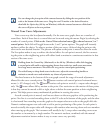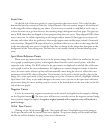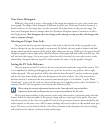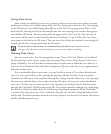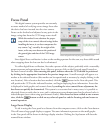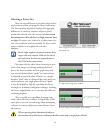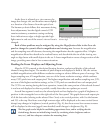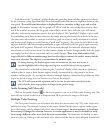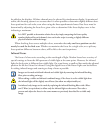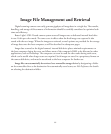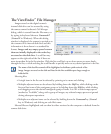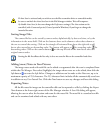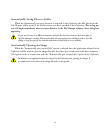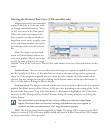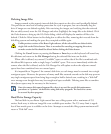
65
be added to the displays. All three channels may be selected for simultaneous display. As mentioned
earlier, this focusing system is so accurate that it is often possible to determine slightly different best-
focus positions for each color, even when using the finest apochromatic lenses. Best focus must be
determined by adjusting the focus for a given color to determine if the focus displays were in fact
indicating a maximum.
It is NOT possible to determine relative focus by simply comparing the focus-quality
number displayed for each channel, since each color stripe is sensing a slightly different
physical location within the image.
When checking focus across multiple colors, remember that only one focus position can ulti-
mately be used for the final scan. Whether to maximize the focus for a single color, or to split any
focus position difference between colors, will be left to the user’s experience.
Infrared Focus
e focus of a lens varies according to the wavelength of light. Modern lenses have a variety of
special coatings to focus the full spectrum of visible light at the same point. However, for infrared
light the focal point is different than visible light. On some lenses, a small red dot marks the adjusted
position for the lens’ focus for infrared. Using the digital focus of the Better Light scan back allows
for taking infrared images and assuring as sharp a focus as possible.
Images can be made with both infrared and visible light by removing the infrared blocking
filter prior to taking an image.
When taking a visible and infrared combined image, if the focus is set for visible light then
the infrared light will be slightly out of focus (but often not objectionably so).
An infrared only image can be made by replacing the infrared blocking filter with a Wrat-
ten 87 filter (or equivalent) to allow only the infrared light to the sensor. en take a
prescan and adjust the focus in the same manner as previously described for a visible only
image.



